How To Cut Butternut Squash
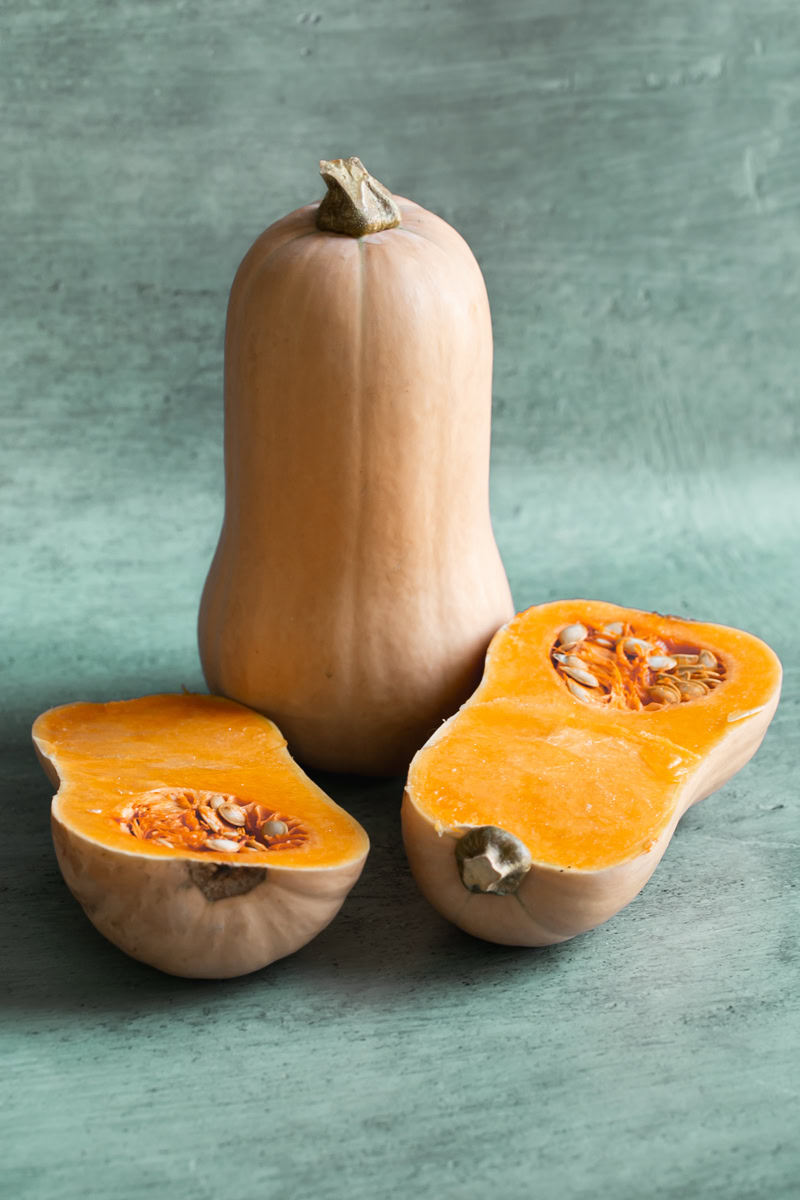
This post may contain affiliate links. As an Amazon Associate and an affiliate for other programs, I earn a commission from qualifying purchases. Read the disclosure policy for more information.
Learn how to cut a butternut squash with confidence! Roasted butternut squash is the best side vegetable served with a variety of meals, but also using butternut squash in soups, stews, pasta, curries, salads and even desserts is so delicious!
It’s that time of year again! As September rolls around, we head into squash season. Butternut squash is one of my favorite fall and winter foods. I love the sweet flavor and the versatility of this nutritious and delicious fruit. 🤔 Did you know technically butternut squash is a fruit?!
Perhaps my love for this squash sometimes gets overshadowed by the prep work and cutting of this relatively difficult food to tackle in the kitchen. BUT! Today, my hope is to take the intimidation out of chopping a butternut squash at home and showing you step-by-step how to do it so that you can feel more confident with this kitchen skill as we head into the end of summer squash season.
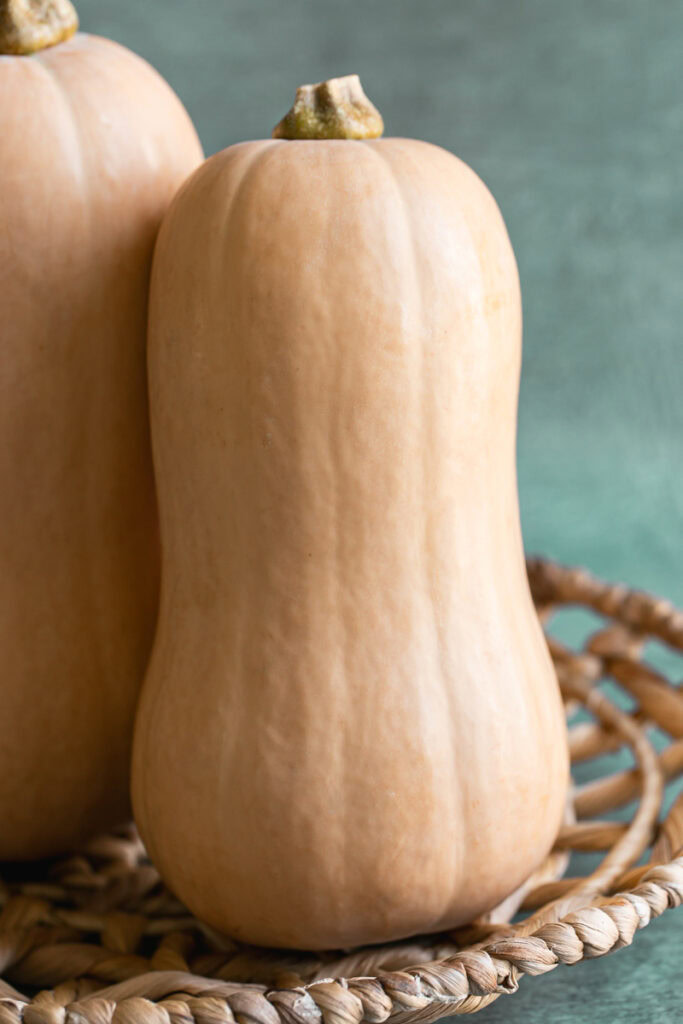
What Is Butternut Squash?
Butternut Squash, also known as butternut pumpkin in parts of the world, is a winter squash that is grown in late summer and harvested in the Fall. Butternut squash grows on a vine and has a sweet, nutty taste, that is similar to pumpkin.
Squashes have all kind of different shapes and sizes. Butternut squash is shaped like a bottle, with a bulbous bottom and long neck. It has a tan-yellowish skin on the outside and is a vibrant, deep orange on the inside. Although technically butternut squash is classified as a fruit, it’s often used in culinary dishes as a vegetable.
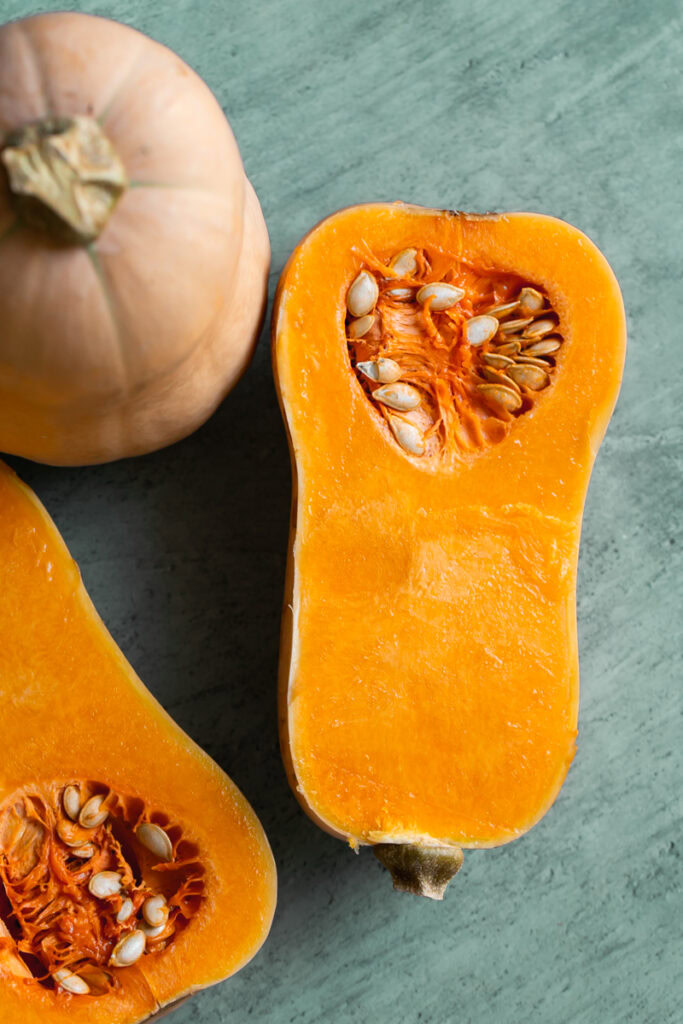
What Does Butternut Squash Taste Like?
Butternut squash has a sweet, kind of nutty taste and has a texture that is similar to sweet potatoes. It’s rich and buttery, similar to pumpkin. When roasted, I think it kind of tastes a bit like a mix between roasted carrots and sweet potatoes.
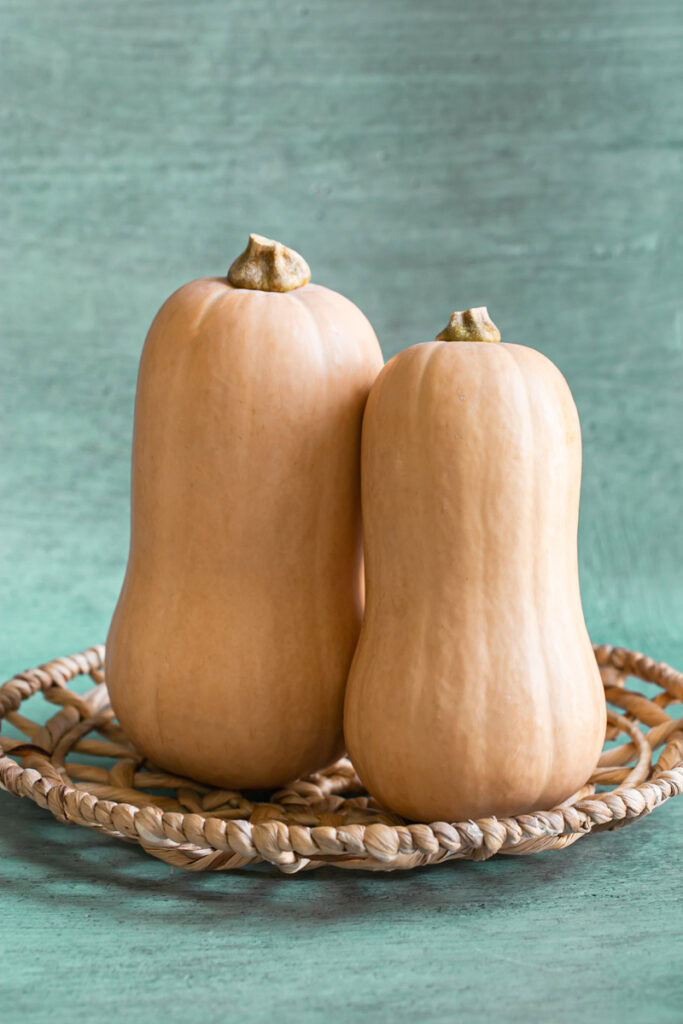
Health Benefits
Butternut squash is boasting with nutrients! It’s filled with beneficial vitamins and minerals, such as vitamin A, C, and E, and also contains B vitamins- thiamine (B1), niacin (B3), pyridoxine (B6), and folate (B9). You will also find protein, fiber, magnesium, calcium, iron and potassium in butternut squash! Source: Healthline.com
When Is Butternut Squash In Season?
Butternut squash season is September through December. That’s when you’ll most likely start seeing them appear in grocery stores, at least here in the United States. Butternut squash falls into the same family as pumpkins, acorn squash, spaghetti squash, honey nut squash (very similar to butternut squash), yellow squash, and zucchini- just to name a few out of the hundreds of squash.
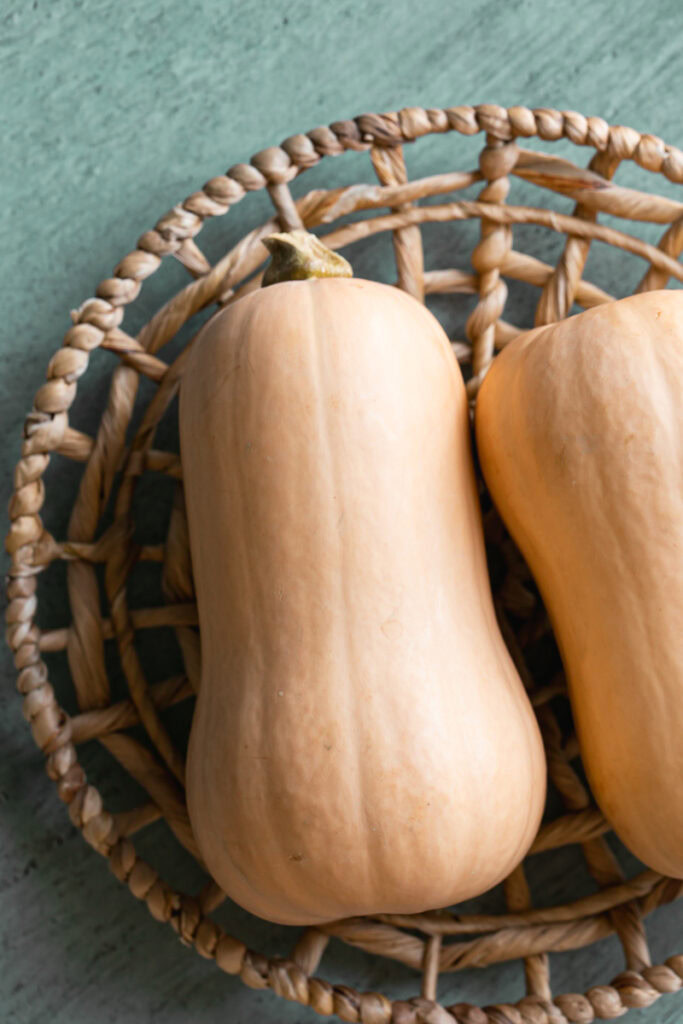
Where To Buy Butternut Squash
You can find butternut squash at most supermarket stores in the non-refrigerated produce section. They are more widely available in late summer through the Fall months, but some grocery stores carry them all-year-round. You can also find them seasonally at farmer’s markets, or even grow your own! I may try to grow my own one of these days because my family and I love butternut squash so much!
How To Pick Out The Best Butternut Squash
When you’re picking out a butternut squash at the grocery store, you want to find one that looks nice on the outside, with no cuts, brown spots, mold or damages/blemishes. You also want to choose one that is firm and not squishy 😖 and feels heavy for its size. The stem should be about an inch long too.

Reasons To Buy Whole Butternut Squash vs. Pre-Chopped
Listen, I get it. If you’re in a hurry and you can actually find pre-cut butternut squash- go for it 😉 But I have learned over the years to just include one extra step in my meal prep that calls for butternut squash for a few different reasons:
1. A whole butternut squash can last up to 4-6 WEEKS when stored in a cool, dry place! 😮 Pre-cut squash only lasts for a few days.
2. It’s easier to find. In my experience, it’s way easier to find a whole butternut squash than pre-cut squash. So it’s a good skill to know!
3. It tastes so much better! An uncut squash just retains so much more of its flavor and doesn’t dry out.
Tools You Need
Quality knife. First things first- you must have a great knife to be able to cut a butternut squash effectively and safely. My go-to knife to use when chopping a butternut squash is the 8″ chef knife. It’s the perfect size. Make sure your knife is sharp too! You can buy a cheap knife sharpener to keep on hand.

Vegetable peeler. Most vegetable peelers will work, but it is preferred to have a sharp, high quality peeler.
Cutting board. Any cutting board will work but ideally you want to use a large cutting board to allow for extra cutting room.
How To Cut A Whole Butternut Squash
Now, the following steps are how I prep a butternut squash and these steps can be used as a guide. Cut the top of the butternut squash off to get rid of the stem.
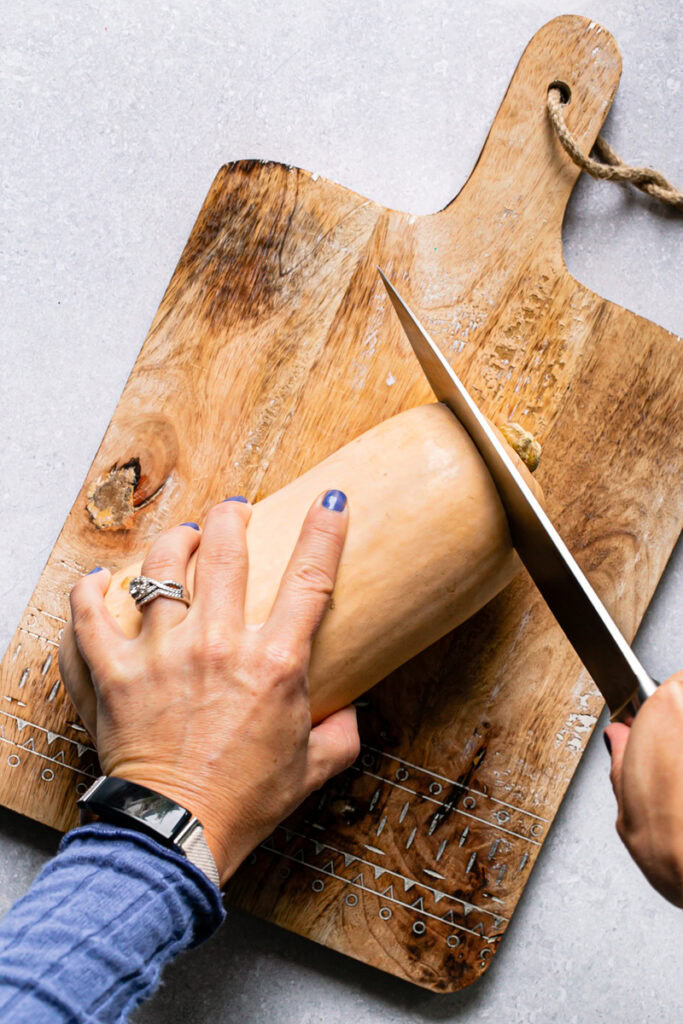
You may also choose to cut the bottom off, but I usually just leave it. Next, you’ll slice the squash in half vertically. This is the trickiest part, so you’ll want to be careful and keep those fingers out of the way.
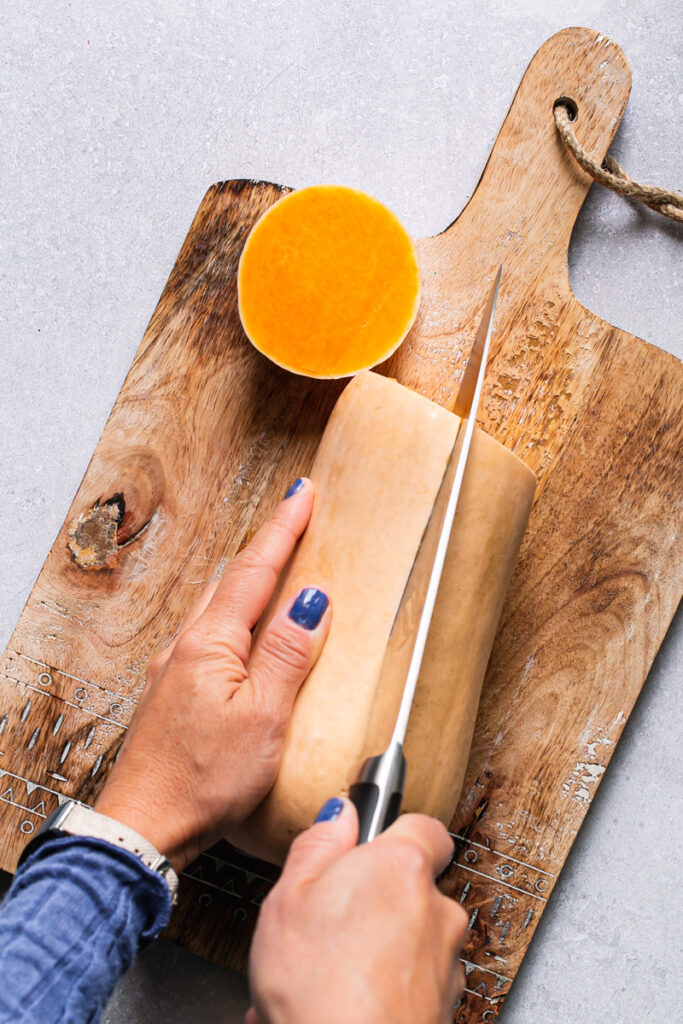
I like to use a method of slicing from the side and from then from the top down to help me stay even.

Now that the squash is cut completely in half, you’ll peel the skin off using a good vegetable peeler.
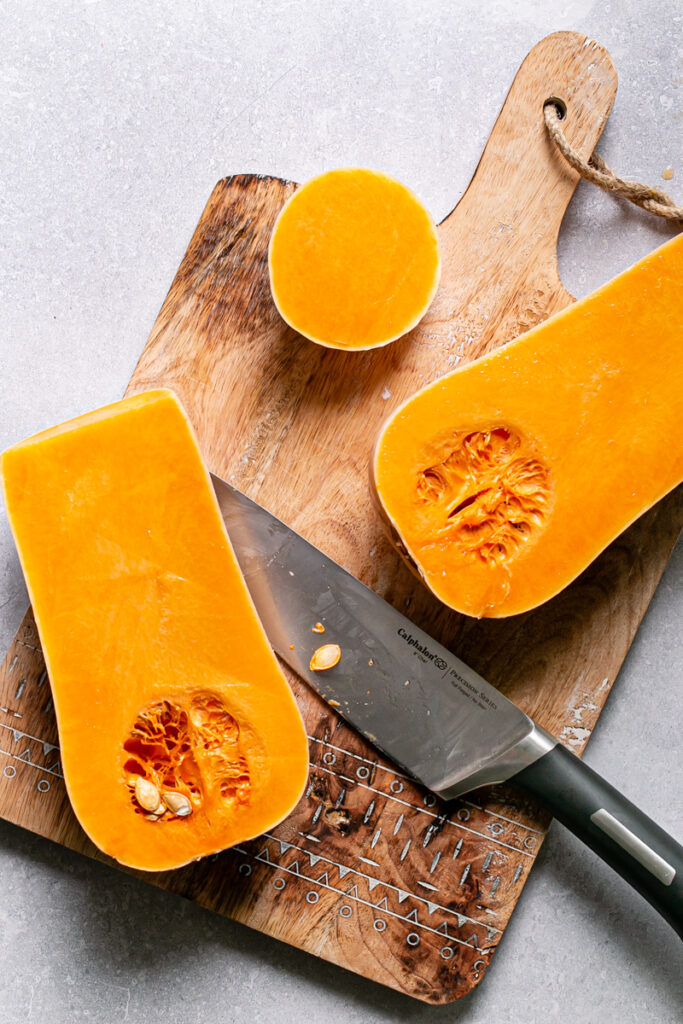
You can also peel the squash at the beginning, before any cutting, but I find it to be a bit more tedious- not to mention I have smaller hands and handling the half when I’m peeling is much easier than the whole squash.
But you can choose when you’d like to peel it- the important thing is that you peel it! Haha UNLESS you’re stuffing the squash, then you want to keep the peel on.
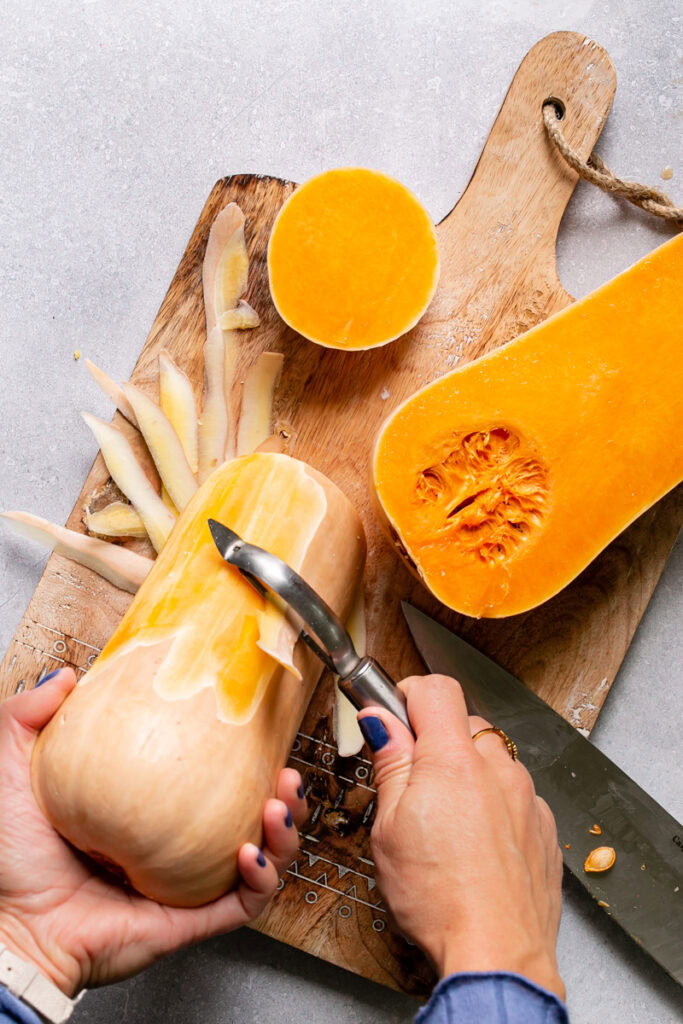
Once the butternut squash is peeled and cut in half, you spoon out the seeds.
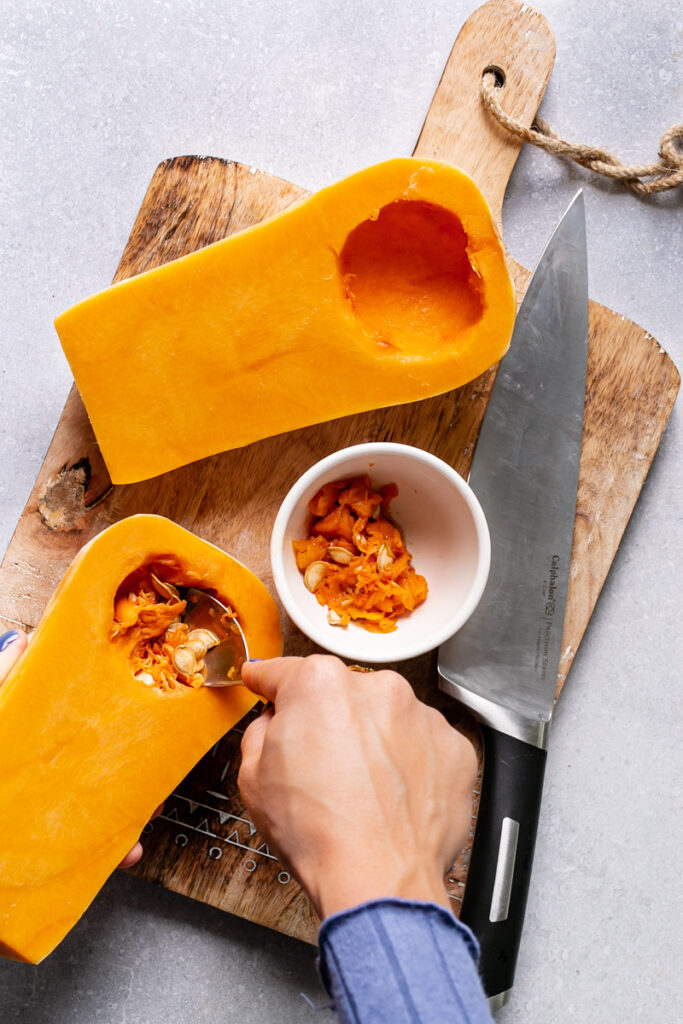
Now it’s time to chop! There’s no real method to this, but I like to start by slicing each squash half into slices like this.

And then chop the butternut squash into whatever size chunks you prefer.

I would suggest not cutting them too small or thin, however, as it’s more likely to burn while roasting that way.
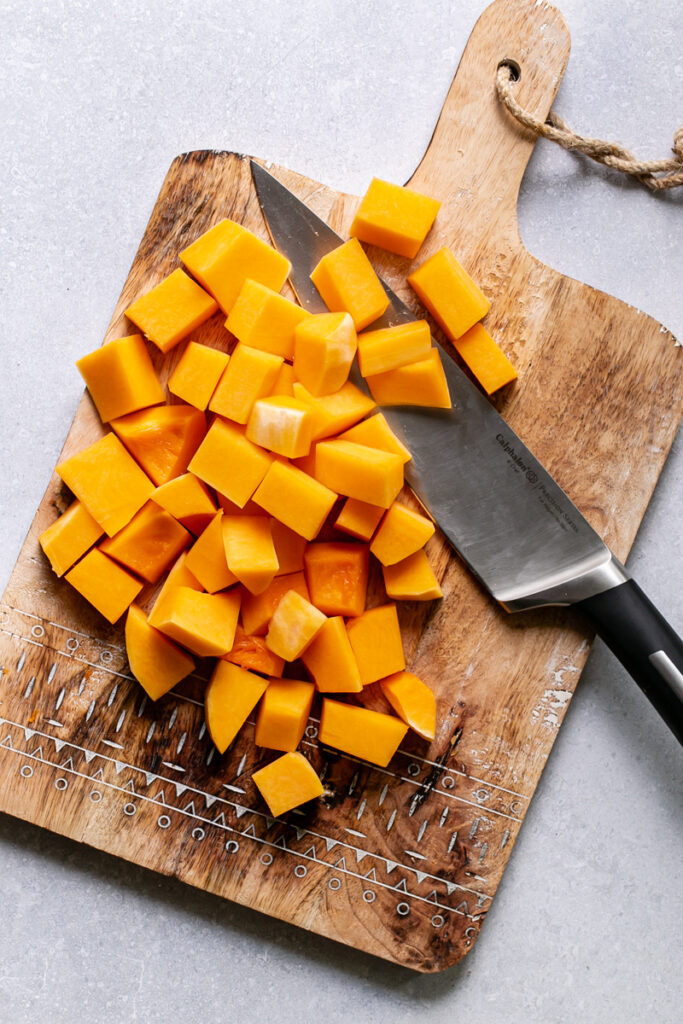
Then it’s onto roasting! See?! As promised, it’s easier than it looks 😉 So now that we confidently know how to chop a butternut squash 🤗.
How To Roast Butternut Squash (My Favorite!)
Roasting butternut squash in the oven with a little olive oil, salt and pepper is my favorite way to cook and enjoy this delicious fruit.
- Preheat the oven to 425 degrees F.
- Peel and chop the butternut squash into cubes.
- Place everything on a baking sheet and drizzle with olive oil, then sprinkle salt and pepper. Roast in the oven for 25-30 minutes, until the butternut squash can be easily pierced with a fork.
You can also roast butternut squash unpeeled, cut in half, the flesh drizzled with olive oil and sprinkled with salt & pepper and then roasted on a parchment-lined baking sheet with the flesh side down.
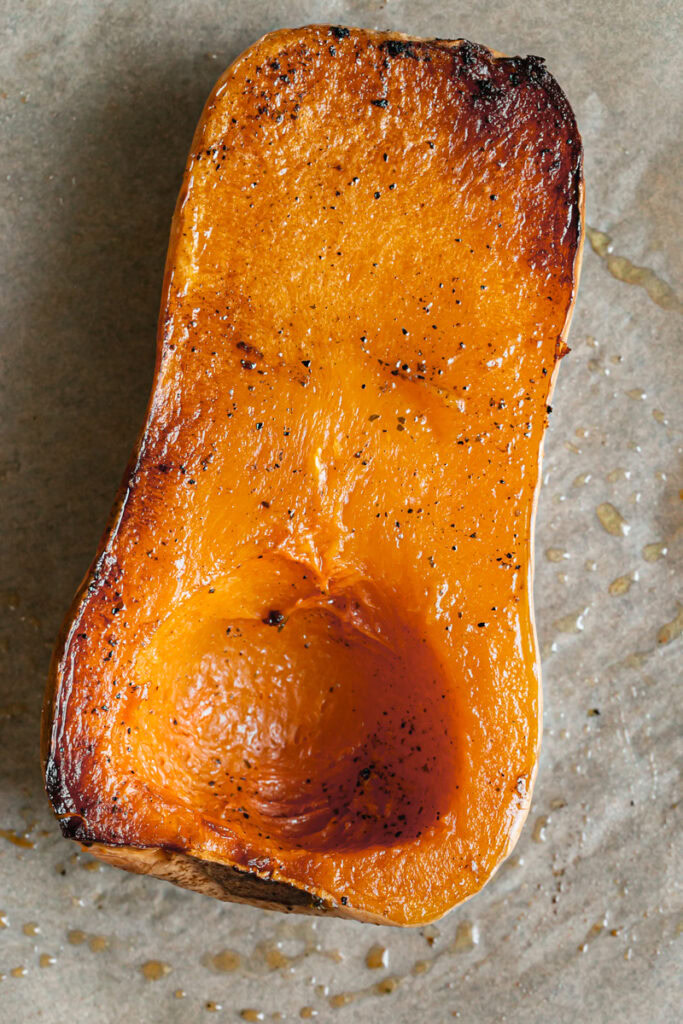
Although there aren’t many seeds that come from a butternut squash, not like the pumpkin seeds you get when carving pumpkins, you could technically roast the seeds as well and enjoy them as a crunchy snack or add them as a garnish to the recipe you’re serving!
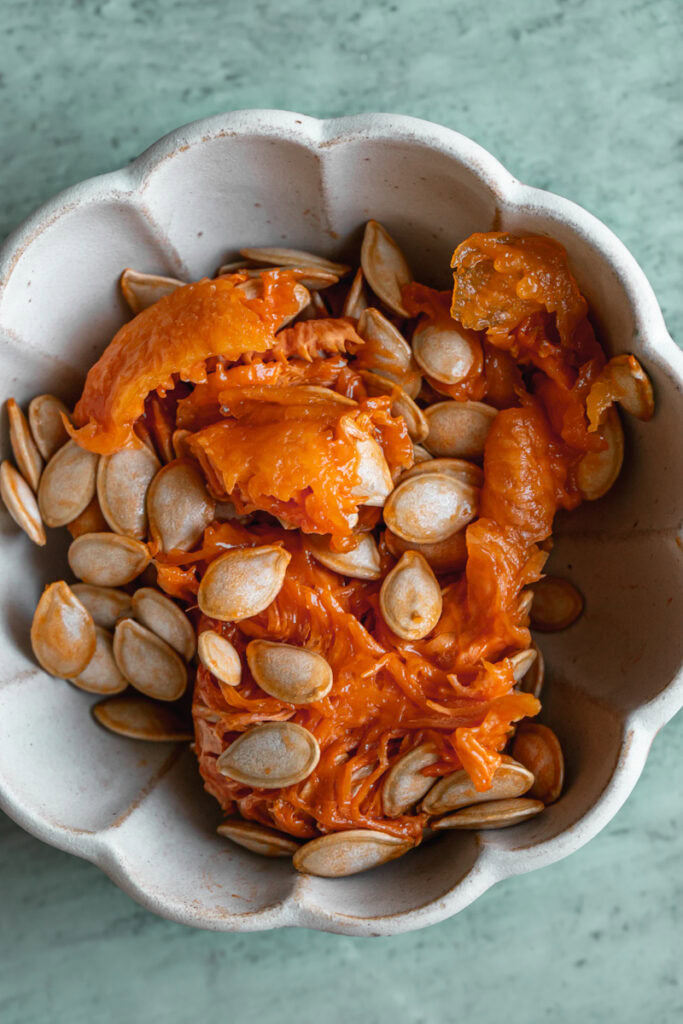
Ways To Use Butternut Squash
There are lots of ways to use butternut squash! It’s a very versatile ingredient. Some of my favorite ways to use butternut squash other than as a side dish roasted, sautéed, pureed or mashed is stuffed butternut squash or hasselback butternut squash, in pasta and pasta sauces, tacos, in casseroles, soups, in bread and muffins, stew, curry, winter salads, rice and grain bowls, and even in desserts!
Recipes Using Butternut Squash
Roasted Butternut Squash Carrot Soup
Learn how to cut a butternut squash with confidence and make this deliciously easy, 100% made-from-scratch Roasted Butternut Squash Carrot Soup! Itu0026#x27;s thick and creamy, gluten-free, vegan, and loaded with plant-based nutrients!
Butternut Squash Spinach Pasta
This Butternut Squash Spinach Pasta is such an easy recipe and is so flavorful youu0026#x27;ll be adding it to your weekly fall dinner menu. With simple ingredients, you will have this gluten-free, vegan pasta dish on your table in just 25 minutes!
Butternut Squash Pesto Quinoa Buddha Bowls
These Butternut Squash Pesto Quinoa Buddha Bowls are a healthy dinner any night of the week! This easy recipe includes quinoa tossed in a homemade pesto, topped with roasted butternut squash and red onion, sautéed spinach, and avocado for a nourishing plant-based meal everyone will love!
Butternut Squash Gnocchi
An easy homemade gnocchi recipe made with butternut squash and potato tossed in a browned butter sage sauce topped with fresh sage leaves, red pepper flakes, and parmesan cheese for a delicious gluten-free, vegan dinner!
Butternut Squash Brownies
These healthy Butternut Squash Brownies are the best way to sneak in some extra veggies! These gluten-free brownies are made with real butternut squash and are topped with a vegan chocolate avocado frosting! They are perfect to satisfy any brownie craving in a healthier way 😉
Roasted Butternut Squash Tomato Soup with Crispy Kale
Cozy up with a nourishing bowl of this made-from-scratch Roasted Butternut Squash Tomato Soup with Crispy Kale! This delicious vegan soup is a great way to use up tomatoes from your garden by roasting them in the oven and blending them with roasted butternut squash, onion, and garlic for a flavorful Fall soup that will be on your dinner menu all winter long!
Curried Butternut Squash Lentil Soup
This Curried Butternut Squash Lentil Soup is such a flavorful, immune and gut boosting soup made with butternut squash, lentils, coconut milk, onion, turmeric powder, red curry paste, and garlic. This healthy soup is made in just 30 minutes and is gluten-free and vegan friendly!
Buttery Butternut Squash and Brussels Sprouts Pasta
This Buttery Butternut Squash and Brussels Sprouts Pasta is such an easy recipe and is so flavorful youu0026#x27;ll be adding it to your weekly fall dinner menu. Made with simple ingredients, you will have this gluten-free, vegan pasta dish on your table in just 30 minutes!
How To Store Butternut Squash
You can store a whole butternut squash uncut, and unpeeled for up to 4-6 weeks in a cool dry place.
Store cut butternut squash in an airtight container for a few days.
I hope this tutorial post gives you the confidence you need to cut a butternut squash on your own! It will come in handy, I promise! 🧡
Comment below and don’t forget to tag me on Instagram or Facebook if you make any of my butternut squash recipes! And I’ll be here cheering you on my friends… you can do it!

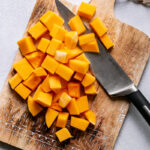
How To Cut Butternut Squash
- Total Time: 45 minutes
Description
Learn how to cut a butternut squash with confidence! Roasted butternut squash is the best side vegetable served with a variety of meals, but also using butternut squash in soups, stews, pasta, curries, salads and even desserts is so delicious!
Ingredients
- 1 whole butternut squash
For Roasting
- olive oil
- salt
- pepper
Instructions
Cut the top of the butternut squash off to get rid of the stem. You may also choose to cut the bottom off, but I usually just leave it.
Next, you'll slice the squash in half vertically. This is the trickiest part, so you'll want to be careful and keep those fingers out of the way. I like to use a method of slicing from the side and from then from the top down to help me stay even.
Now that the squash is cut completely in half, you'll peel the skin off using a good vegetable peeler.
You can also peel the squash at the beginning, before any cutting, but I find it to be a bit more tedious- not to mention I have smaller hands and handling the half when I'm peeling is much easier than the whole squash. But you can choose when you'd like to peel it- the important thing is that you peel it! Haha
Once the butternut squash is peeled and cut in half, you spoon out the seeds.
Now it's time to chop! There's no real method to this, but I like to start by slicing each squash half into slices.
And then chop the butternut squash into whatever size chunks you prefer.
I would suggest not cutting them too small or thin, however, as it's more likely to burn while roasting.
How To Roast Butternut Squash
Preheat the oven to 425 degrees F. Place everything on a baking sheet and drizzle with olive oil, then sprinkle salt and pepper. Roast in the oven for 25-30 minutes, until the butternut squash can be easily pierced with a fork.
Notes
READ MY BLOG POST FOR A PHOTO TUTORIAL, MORE TIPS, AND RECIPES THAT INCLUDE BUTTERNUT SQUASH!
- Prep Time: 15 minutes
- Additional Time: 0 hours
- Cook Time: 30 minutes
- Category: tutuorials
More Tutorial Posts
How to Make Vegan Buttermilk
This Vegan Buttermilk recipe is my go-to for making by gluten-free baked good light and fluffy without adding eggs! It only requires 2 simple, plant-based ingredients and perfect for gluten-free, vegan baking!
How To Easily Cut u0026 Shred Red (or Green) Cabbage
In this step-by-step tutorial post you’ll learn how to easily cut and shred red or green cabbage for a variety of dishes such as coleslaw, tacos, sauerkraut, Asian-inspired noodle dishes and more!


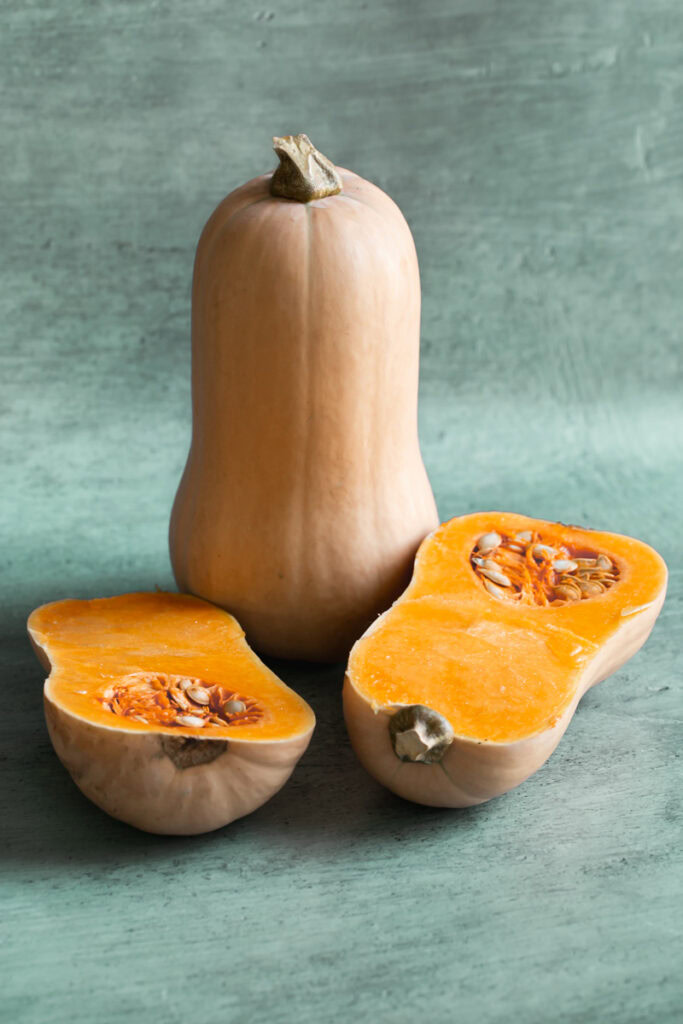
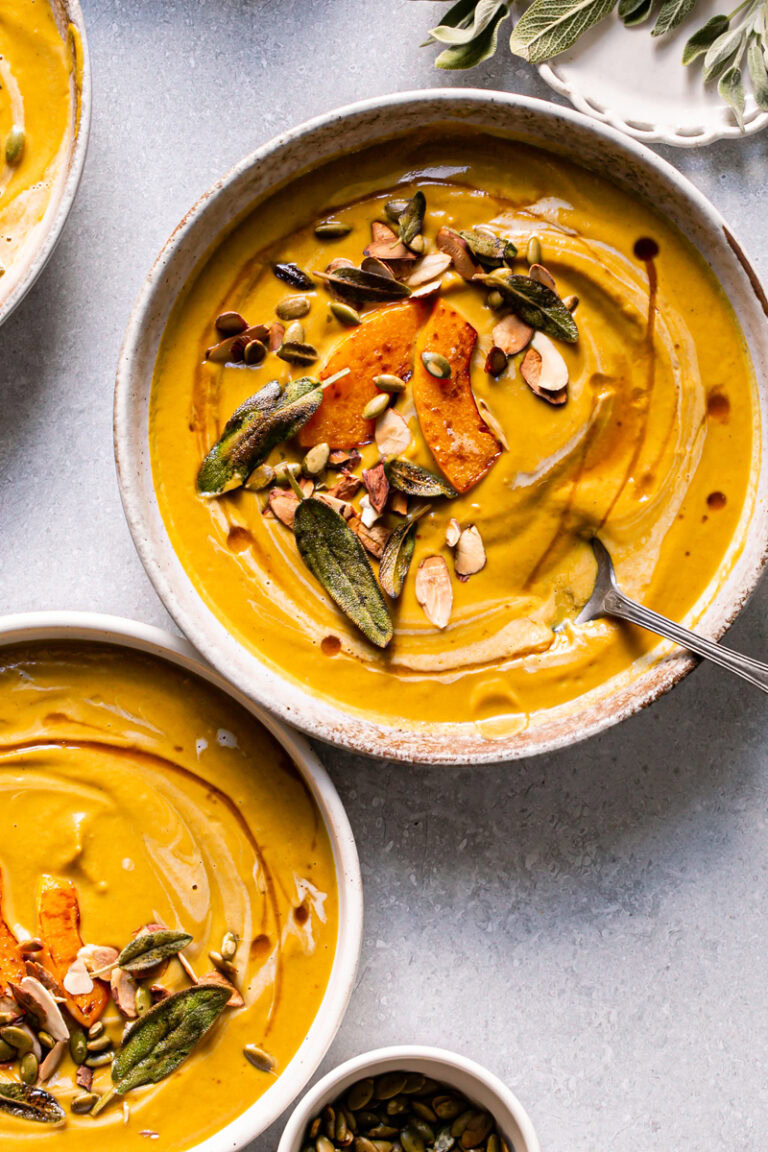
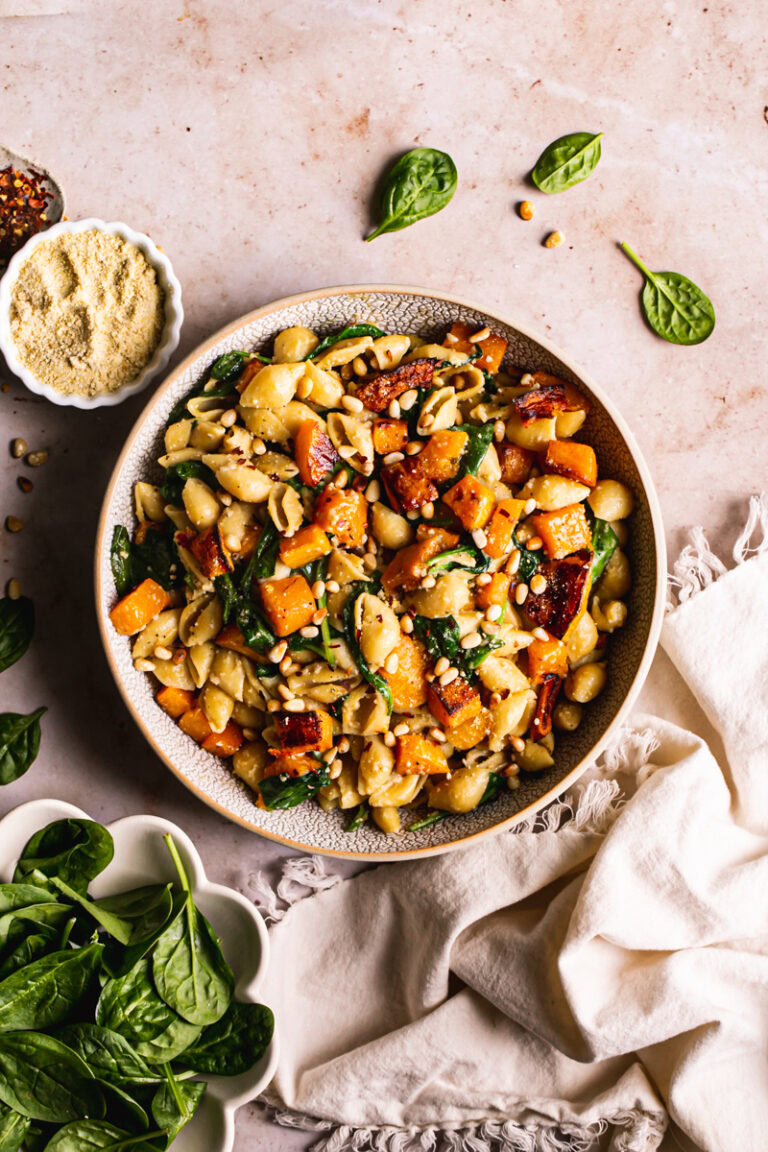

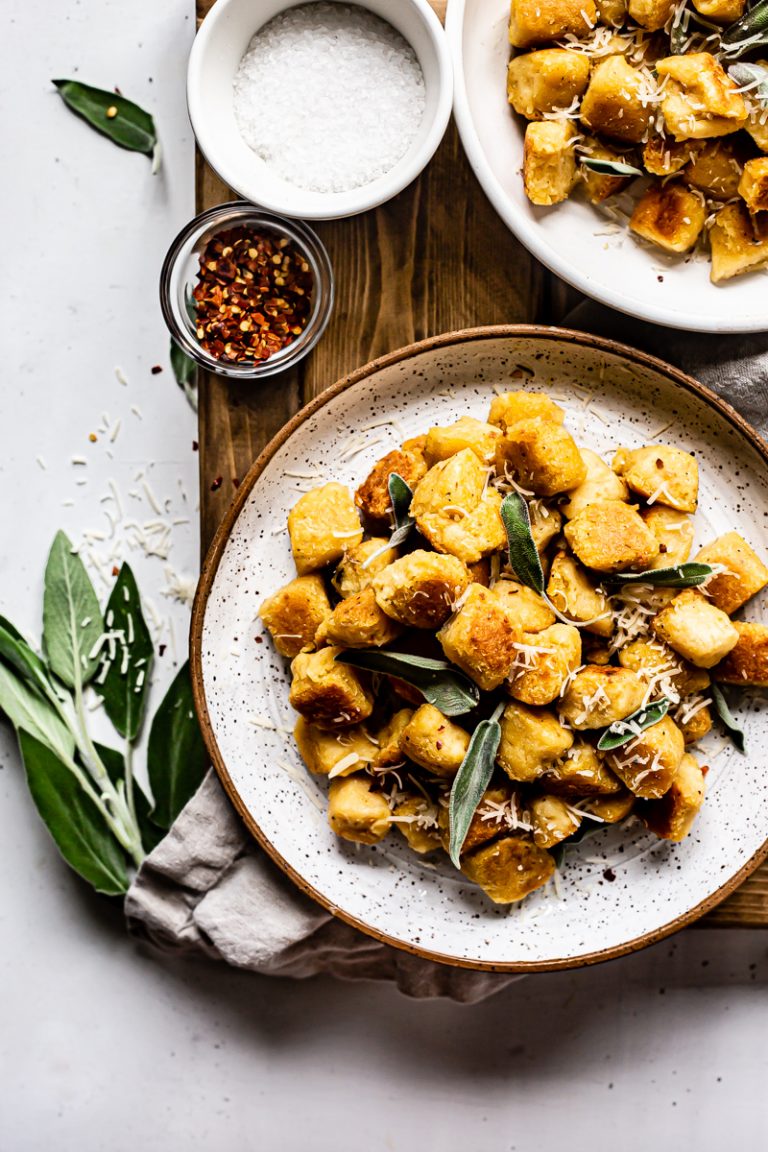
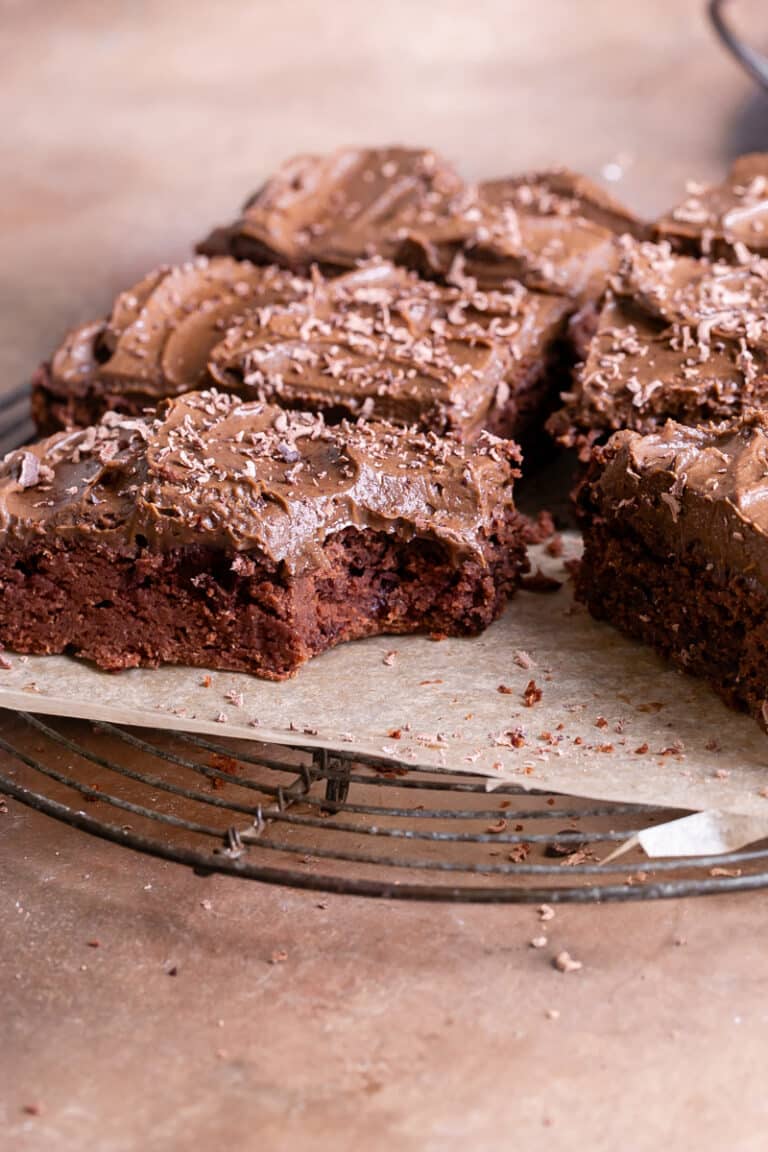
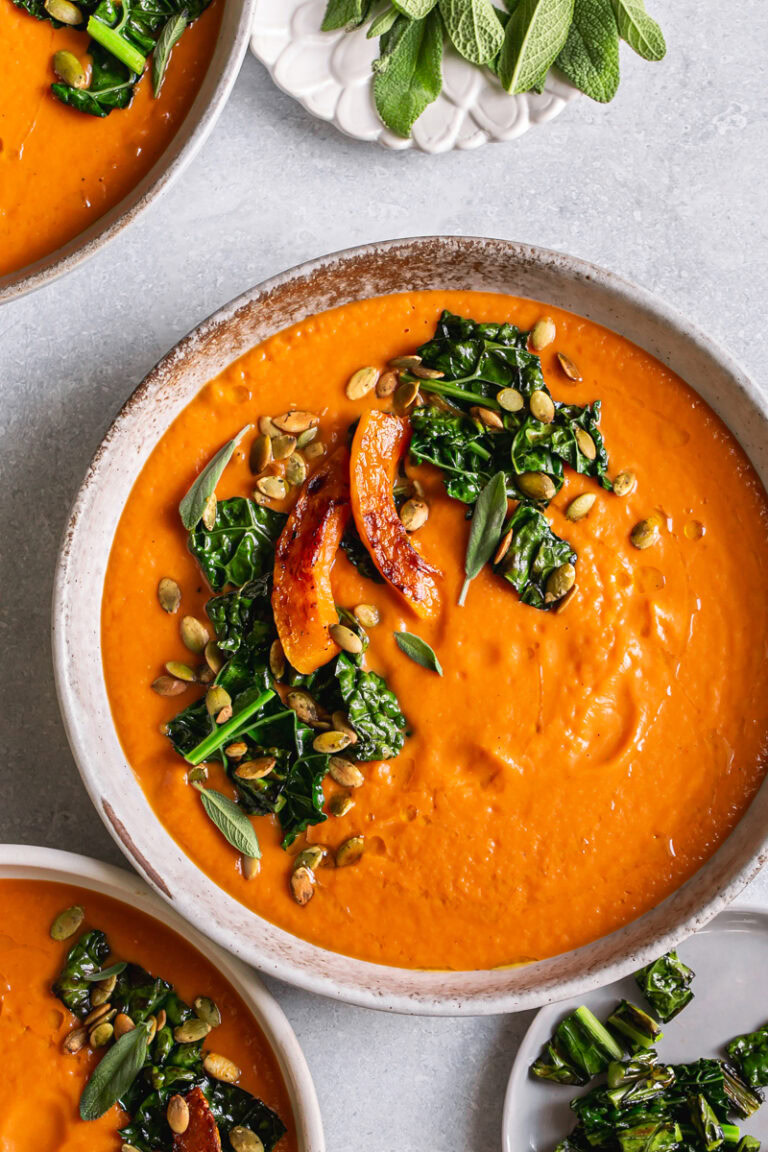
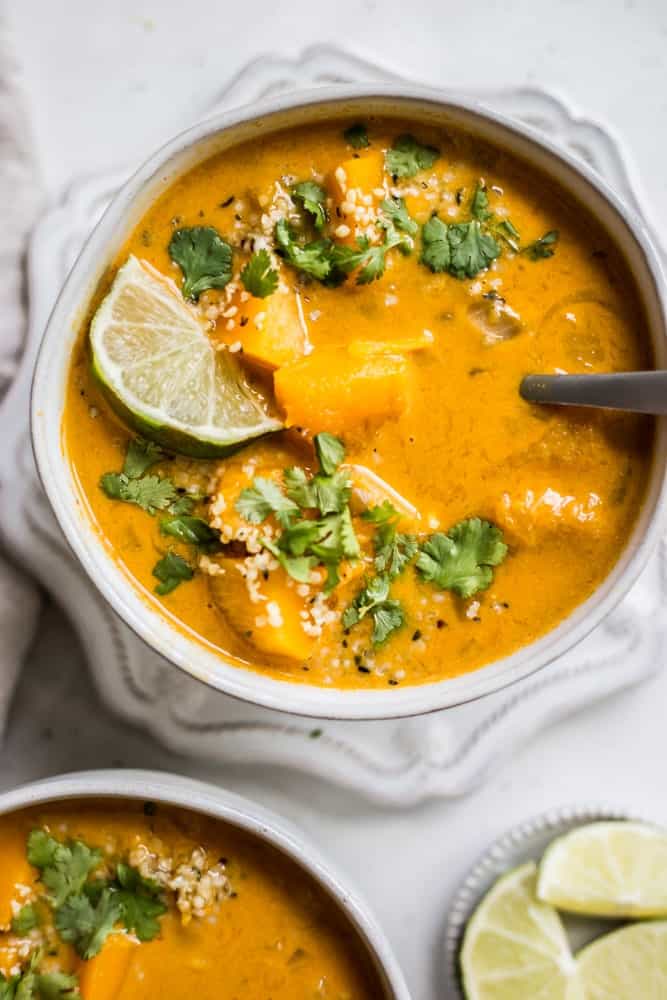
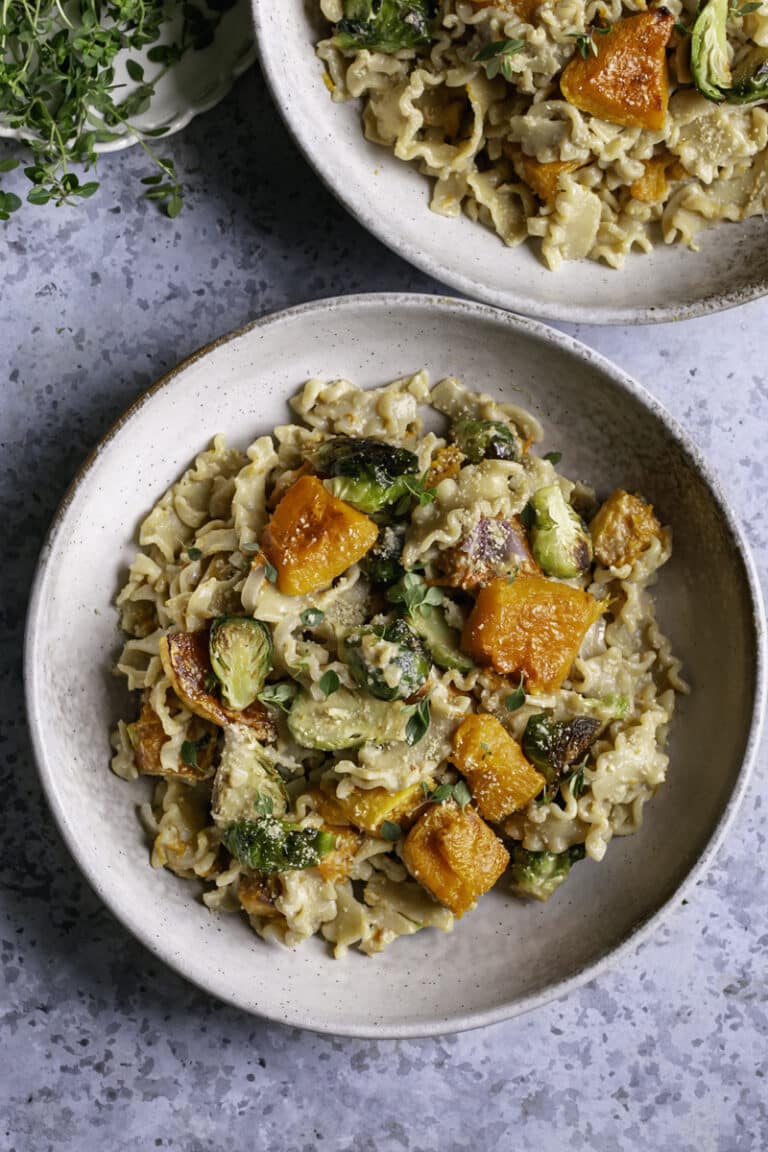
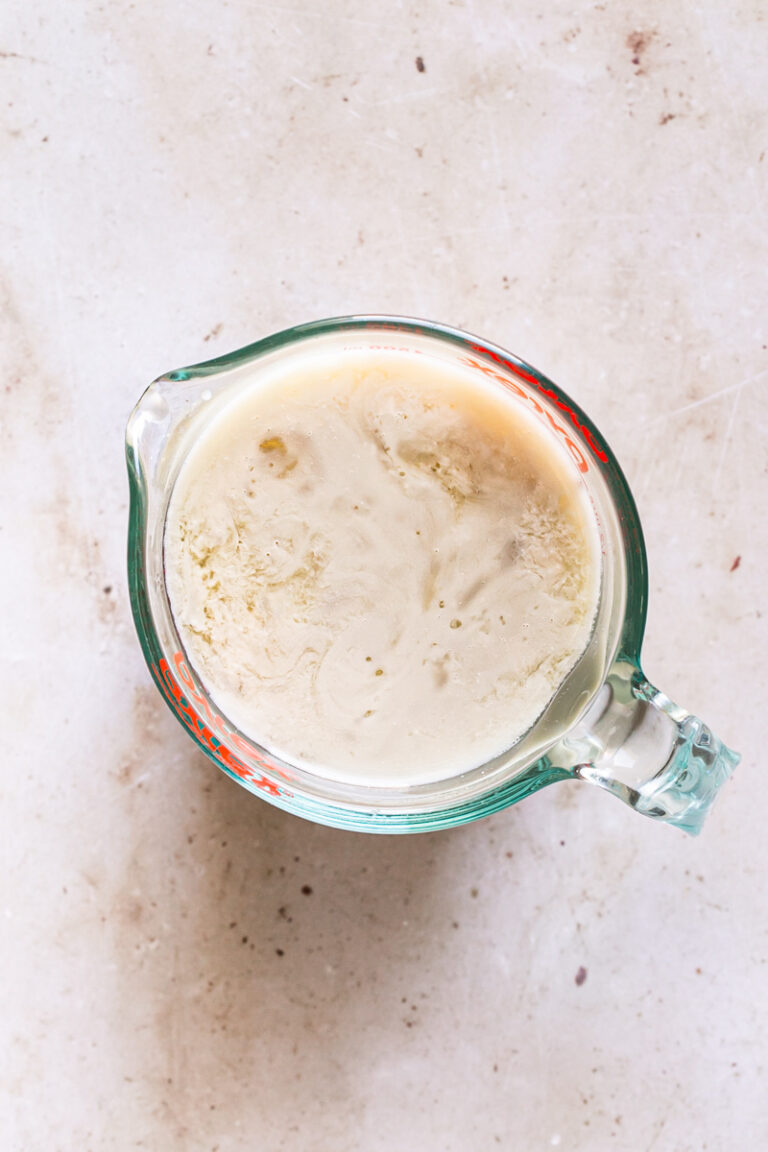
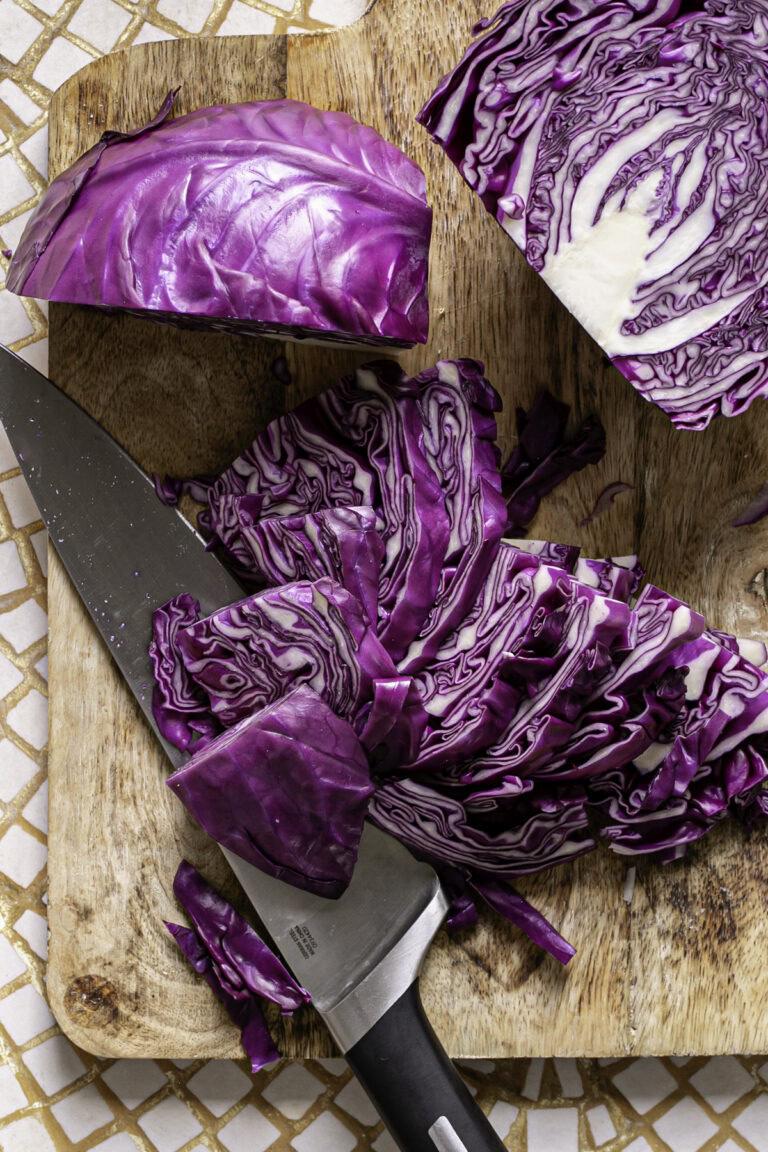
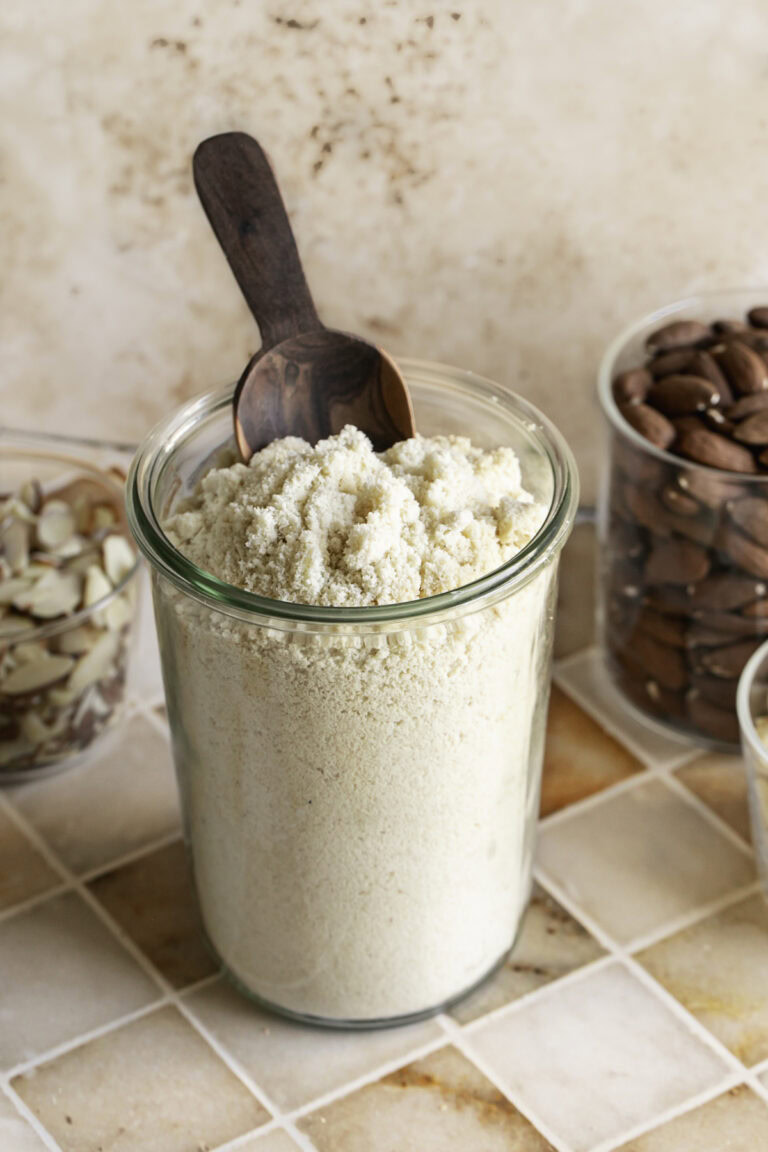
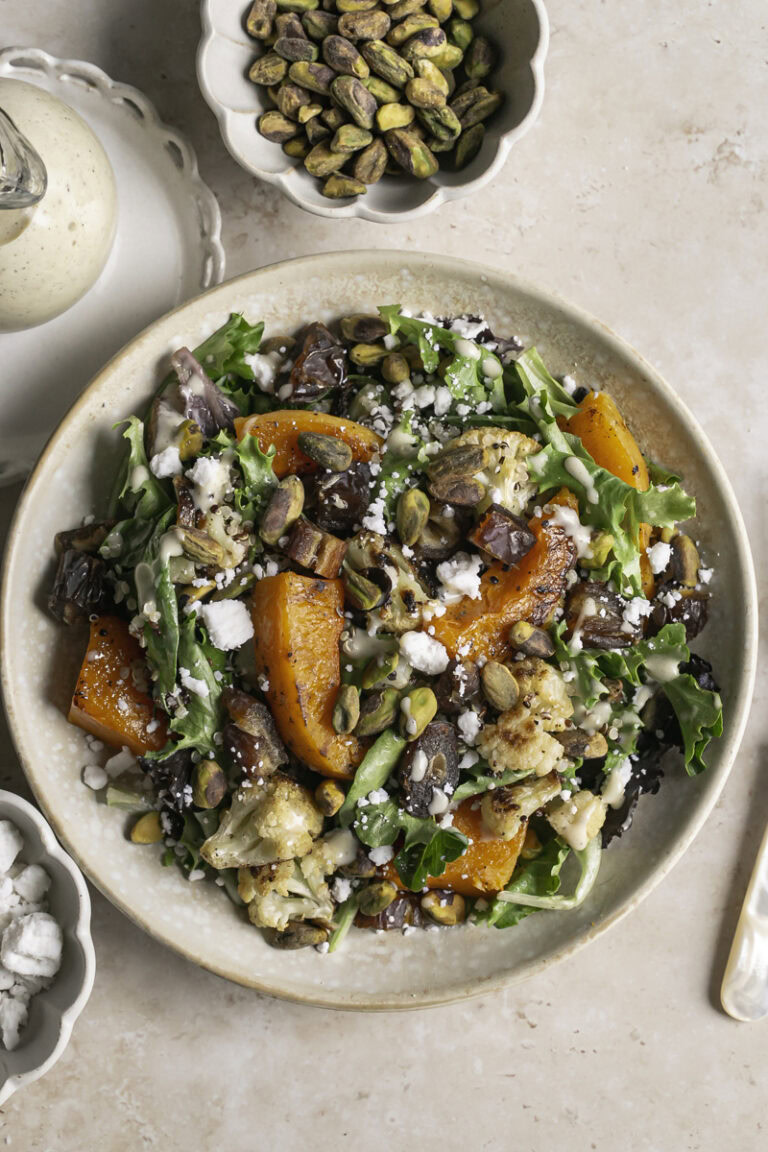

Butternut squash can be roasted with the peel on. The peel can be eaten when cooked. It gets soft and it’s delicious just like the rest of the squash. Cutting it I made easier by microwaving the whole squash for about 3 minutes prior to cutting it. Makes it so much easier and safer to cut. I lived in Australia for 30 years and that is when I became acquainted with eating it, usually roasted in chunks and served with roasted meat or in a salad with arugula, pine nuts and feta or blended up in soup. So yummy!
Hi Wendy! Thanks for sharing that with me. I do briefly mention that you can roast the squash with the skin on in the post, I love doing that when I stuff it with rice or quinoa, etc. I do also like the tip about microwaving it prior to cutting to make it easier. Thanks for sharing that tip with my audience! 🧡